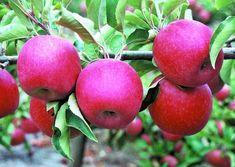
Southern hemisphere apple exports are forecast to increase this season despite a smaller crop overall.
Figures released last week in Berlin by the World Apple & Pear Association (WAPA) show that output from Argentina, Australia, Brazil, Chile, New Zealand and South Africa is expected to reach 5.2 million tonnes, up one per cent on the 2010 harvest, although export figures are expected to rise five per cent to 1.8mt.
Stocks held in the northern hemisphere are lower at this point in the season than in 2010, which bodes well for a smooth changeover. Apples in storage in Europe are 12 per cent down on a year ago and in the US stocks are four per cent down.
Apple output in Argentina is set to recover from low volumes last year with a 16 per cent rise year on year while Australia, Chile and South Africa are all estimated to produce crops some two to three per cent up on 2010. New Zealand is forecasting a 12 per cent larger crop but Brazil is to see a 22 per cent decline to 951,000t.
Peter Beaven, newly elected vice-president of WAPA, said: “Because of Brazil’s location so close to the equator, apples are grown in elevated regions some 1,500m above sea level. This can be quite risky in terms of the weather so the crop can vary quite substantially year to year.”
Beaven also pointed out that with a strengthening domestic market and high value of the real, exports from Brazil are likely to be affected. “We will see not just demand for the domestic crop but also Uruguay, Argentina and Chile will be sending to Brazil,” said Beaven.
By variety, output of Braeburn from the southern hemisphere is expected to increase by nine per cent and Cripps Pink by four to reach more than 230,000 tonnes each. Fuji is showing signs of biannual bearing in major growing regions and as a result the southern hemisphere crop will be 19 per cent down, while Gala is forecast to be just two per cent down on last season and four per cent up on the three-year average.



